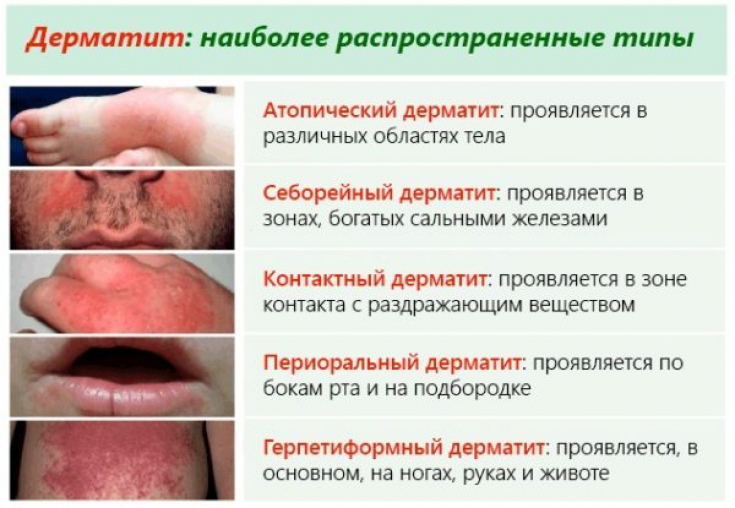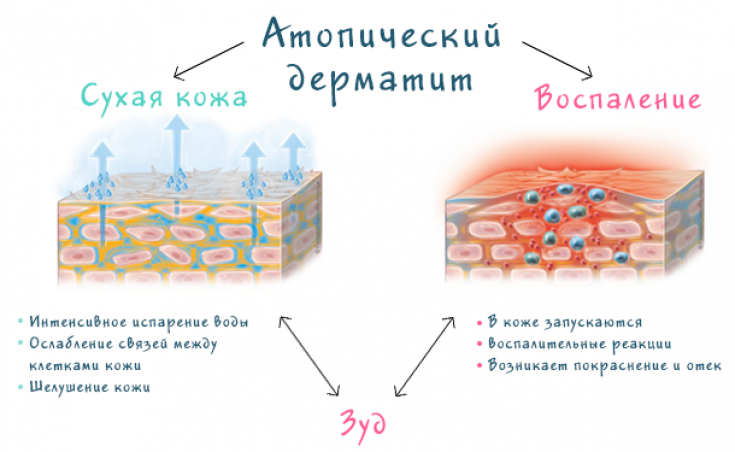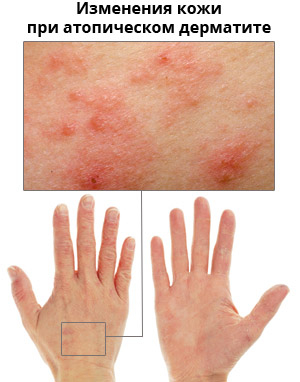In the practice of a dermatologist, inflammatory skin diseases (dermatitis) occupy a leading position.
The leading cause of the disease most often remains unidentified, however, an important role in their development is assigned to viral, bacterial and fungal agents, not forgetting the possible allergic and toxic nature of the disease.
According to the International Classification of Diseases, dermatitis is divided into atopic, seborrheic, allergic contact, exfoliative and other types.
Find out in the article on estet-portal.com which principles and approaches to the treatment of dermatitis are leading in the practice of a dermatologist.
Principles of treatment of dermatitis
A wide range of dermatitis of various etiopathogenesis, their significant prevalence gave impetus to the development of many treatment regimens for dermatitis involving systemic and local drugs.
Follow us on Instagram!
And although today there is no universal therapeutic regimen for the treatment of dermatitis, an important goal of a dermatologist is to reduce the severity of the inflammatory process − key manifestation of dermatitis. The choice of the necessary drug and the duration of the therapeutic course are determined by the attending dermatologist, taking into account the characteristics of the course of the disease and the individual qualities of the patient himself.
Discoveries in the pathogenesis of atopic dermatitis
Clinician's strategies for treating dermatitis
The strategy for managing such a patient is based on three main pillars:
1. The complexity of diagnostic methods for examining the skin of a patient and his body with the determination of the causes and pathogenesis of the disease.
2. Multifactorial impact on the chain of pathogenesis, manifestations of the disease and the background state of the organism.
3. Continuity of treatment until complete regeneration of the skin.

These principles are implemented through systemic and local therapeutic effects on the patient's body. Despite the difficulties in determining the cause of dermatitis, the first recommendation of a dermatologist for its treatment is "isolation"; potential causative agent from the patient: contact dermatitis − changing the detergent to another, preferably hypoallergenic, eliminating food allergens from the diet in atopic dermatitis, or canceling the prescribed drug, which may be a possible cause of exfoliative dermatitis.
Therapeutic efficacy of histamine blockers in eczema
Further therapeutic measures prescribed by a dermatologist are aimed at the pathogenesis and directly at the symptoms of the disease, include the use of antihistamines and desensitizing drugs, sedative drugs and correction of the patient's background condition.
Approaches to the treatment of dermatitis depending on the type of therapy
Treatment of atopic dermatitis in any age category includes the selection of an effective diet therapy, differentiation of the effects of an allergen on the body, the use of hyposensitizing, antihistamines, sedatives, topical glucocorticoids, physiotherapeutic methods of treatment, as well as the correction of concomitant diseases and pathological conditions.
Allergic eczema may be a factor in the development of food allergies
Topical therapy in the treatment of dermatitis should reduce the expression of local inflammation, thereby leveling the main symptoms of the acute and chronic phases of the disease, eliminate skin dryness if present, restore and improve the barrier function of the skin, and also ensure the prevention of secondary infection.

Treatment of dermatitis may include topical glucocorticoids, topical calcineurin inhibitors, antiseptics. According to the treatment protocol, the forms of preparations for external therapy must be used differentially, depending on the severity and dynamics of skin inflammation.
Five skin manifestations that can save lives if diagnosed
Requirements for drugs in the treatment of dermatitis

An optimal drug for the treatment of dermatitis should have high potency and minimal systemic and local adverse reactions.
The strength of the drug should correspond to the severity of the clinical picture of dermatitis, dosage form − correspond to the stage of the inflammatory process, its morphological features, the concentration of glucocorticosteroids and the frequency of use should not cause the development of side effects.
Main risk factors for melanoma
The principles of topical therapy of atopic dermatitis are similar to the treatment of non-allergic dermatitis: the leading strategy here is an individual approach, taking into account the patient's age, stage and variant of the disease, localization and prevalence of the process, the presence of infection and the effectiveness of previous treatment.
As with other etiology dermatitis, an important part of the treatment for atopic is local therapy with the use of topical glucocorticoids, calcineurin blockers, emollients, the effectiveness of which in this disease has been proven in a number of clinical studies.
A new antibiotic in the treatment of pyoderma






Add a comment